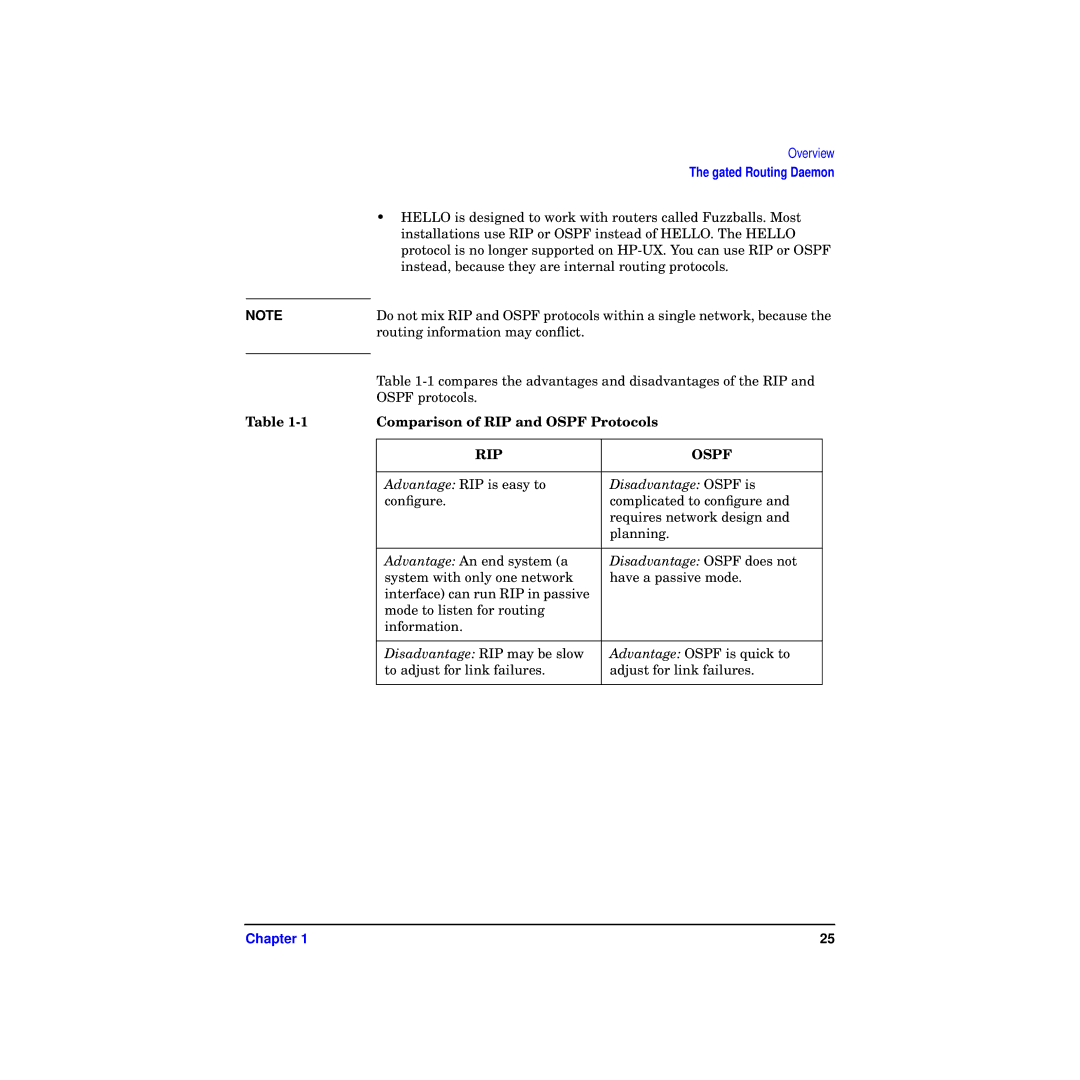
|
|
| Overview | |
|
|
| The gated Routing Daemon | |
|
| • HELLO is designed to work with routers called Fuzzballs. Most | ||
|
| installations use RIP or OSPF instead of HELLO. The HELLO | ||
|
| protocol is no longer supported on | ||
|
| instead, because they are internal routing protocols. | ||
|
| Do not mix RIP and OSPF protocols within a single network, because the | ||
NOTE |
| |||
|
| routing information may conflict. |
|
|
|
| Table | ||
|
| |||
|
| OSPF protocols. |
|
|
Table |
| Comparison of RIP and OSPF Protocols | ||
|
|
|
|
|
|
| RIP | OSPF |
|
|
|
|
|
|
|
| Advantage: RIP is easy to | Disadvantage: OSPF is |
|
|
| configure. | complicated to configure and |
|
|
|
| requires network design and |
|
|
|
| planning. |
|
|
|
|
|
|
|
| Advantage: An end system (a | Disadvantage: OSPF does not |
|
|
| system with only one network | have a passive mode. |
|
|
| interface) can run RIP in passive |
|
|
|
| mode to listen for routing |
|
|
|
| information. |
|
|
|
|
|
|
|
|
| Disadvantage: RIP may be slow | Advantage: OSPF is quick to |
|
|
| to adjust for link failures. | adjust for link failures. |
|
|
|
|
|
|
Chapter 1 | 25 |
